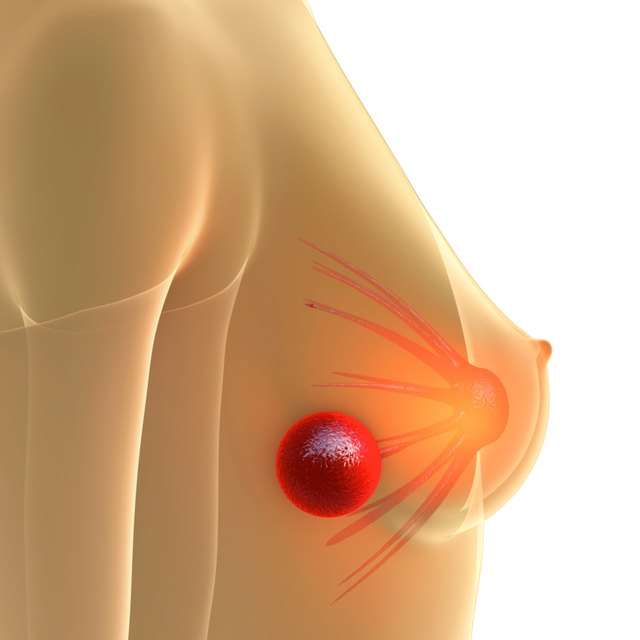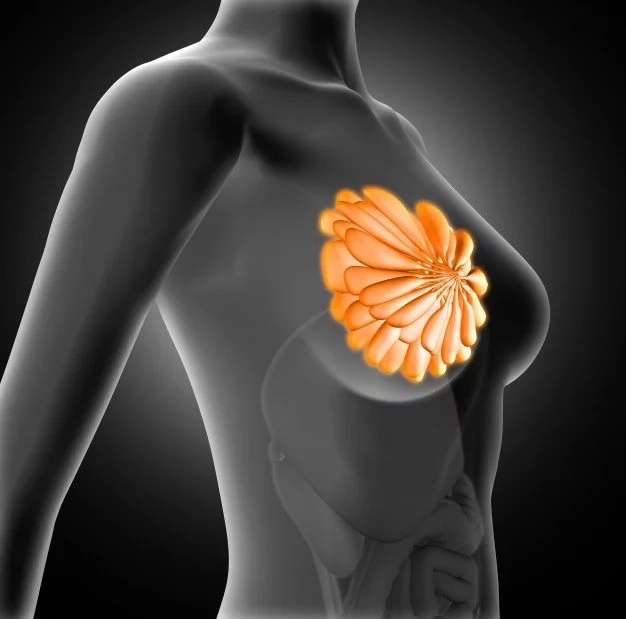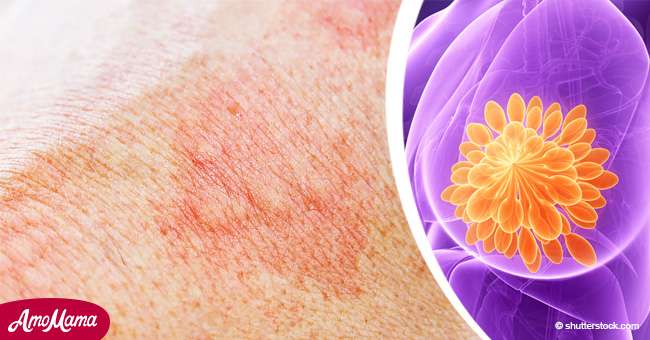What Are The Stages Of Breast Cancer
There are two different staging systems for breast cancer. One is called anatomic staging while the other is prognostic staging. The anatomic staging is defined by the areas of the body where the breast cancer is found and helps to define appropriate treatment. The prognostic staging helps medical professionals communicate how likely a patient is to be cured of the cancer assuming that all appropriate treatment is given.
The anatomic staging system is as follows:
Stage 0 breast disease is when the disease is localized to the milk ducts .
Stage I breast cancer is smaller than 2 cm across and hasnt spread anywhere including no involvement in the lymph nodes.
Stage II breast cancer is one of the following:
- The tumor is less than 2 cm across but has spread to the underarm lymph nodes .
- The tumor is between 2 and 5 cm .
- The tumor is larger than 5 cm and has not spread to the lymph nodes under the arm .
Stage III breast cancer is also called locally advanced breast cancer. The tumor is any size with cancerous lymph nodes that adhere to one another or to surrounding tissue . Stage IIIB breast cancer is a tumor of any size that has spread to the skin, chest wall, or internal mammary lymph nodes .
Stage IV breast cancer is defined as a tumor, regardless of size, that has spread to areas away from the breast, such as bones, lungs, liver or brain.
Breast Lumps: Why Size Movability And Pain Matter
Your breasts are made up of fat, nerves, blood vessels, fibrous connective tissue, and glandular tissue, as well as an intricate system of milk-producing lobules , and ducts . This anatomy in and of itself creates a lumpy, uneven terrain.
A lump in the breast distinguishes itself from this background of normal irregularities. Harmless breast lumps can be solid and unmovable, like a dried bean or movable, soft, and fluid-filled you can roll it between your fingers like a grape. A lump may be pea-size, smaller than a pea, or even several inches across, although this larger size is rare.
What typically differentiates a benign breast lump from a cancerous breast lump is movement. That is, a fluid-filled lump that rolls between the fingers is less likely to be cancerous than a hard lump in your breast that feels rooted in place.
Another rule of thumb has to do with pain. Breast cancer does not usually cause pain. Benign conditions sometimes do, although there are exceptions to this rule as well. For instance, a rare form of breast cancer, inflammatory breast cancer, may cause symptoms such as aching, tenderness, pain, or burning in the breast.
The only way to know the status of a lump for sure is through medical tests, such as an ultrasound, a mammogram, or a fine needle aspiration , in which your doctor uses a tiny needle to extract a bit of the lump for laboratory examination.
RELATED: What Is a Skin Lump? Symptoms, Causes, Diagnosis, Treatment, and Prevention
How Fast Does A Breast Cancer Lump Grow
Breast cancer has to divide 30 times before it can be felt by touch. Up to the 28th cell division, neither you nor your doctor can detect it by hand. With most breast cancers, each division takes one to two months, so by the time you can feel a cancerous lump, cancer has been in your body for two to five years.
Don’t Miss: What Does Malignant Neoplasm Of Breast Mean
How Quickly Does A Breast Cancer Tumor Grow
On average, the doubling time for a breast cancer tumor, or time for a tumor to double in size, is approximately 50 to 200 days. The growth rate of a breast tumor varies based on the type of breast cancer, tumor characteristics, the age of the patient at diagnosis, and menopausal status. Inflammatory breast cancer tumors and triple negative breast cancer tumors tend to grow faster than estrogen receptor positive and HER2 negative tumors.
When To Contact A Medical Professional

- The skin on your breast appears dimpled or wrinkled .
- You find a new breast lump during self-exam.
- You have bruising on your breast but did not experience any injury.
- You have nipple discharge, especially if it is bloody, clear like water, or pinkish .
- Your nipple is inverted but normally is not inverted.
Also call if:
- You are a woman, age 20 or older, and want guidance on how to perform a breast self-exam.
- You are a woman over age 40 and have not had a mammogram in the past year.
Also Check: Did Anne Hathaway Have Cancer In Real Life
Where Can Breast Cancer Lumps Be Found
Finding a lump in your breast is a reason for worry. However, it may be comforting to know that the majority of breast lumps arent malignant. In reality, an estimated 80% of women who get a breast biopsy are found to be free of breast cancer. The original tumor is most often seen in the upper outer quadrant of the breast in individuals who do develop breast cancer. Breast cancer may, of course, begin everywhere there is breast tissue. Everyone has breast tissue, after all.
Continue reading to learn where breast cancer lumps are most often seen, as well as what to do if you find one.
What Are The Symptoms Of Breast Cancer
Breast pain can be a symptom of cancer. If you have any symptoms that worry you, be sure to see your doctor right away.
Different people have different symptoms of breast cancer. Some people do not have any signs or symptoms at all.
Some warning signs of breast cancer are
- New lump in the breast or underarm .
- Thickening or swelling of part of the breast.
- Irritation or dimpling of breast skin.
- Redness or flaky skin in the nipple area or the breast.
- Pulling in of the nipple or pain in the nipple area.
- Nipple discharge other than breast milk, including blood.
- Any change in the size or the shape of the breast.
- Pain in any area of the breast.
Keep in mind that these symptoms can happen with other conditions that are not cancer.
If you have any signs or symptoms that worry you, be sure to see your doctor right away.
Dont Miss: What Age Does Breast Cancer Affect
You May Like: What Organs Does Breast Cancer Affect
Breast Changes And Conditions
As you await follow-up test results, remember that most breast changes are not cancer.
You may have just received an abnormal mammogram result, or perhaps you or your health care provider found a breast lump or other breast change. Keep in mind that breast changes are very common, and most are not cancer. This page can help you learn about symptoms during your lifetime that are not cancer as well as follow-up tests used to diagnose breast conditions and treatments for specific breast conditions.
Does A Breast Cancer Lump Feel Like A Pea
The Importance of Size, Movability, and Pain in Breast Lumps Breast lumps that arent harmful can be firm and unmovable, like a dried bean, or movable, fluffy, and fluid-filled, like a grape that you can roll between your fingers. A lump may be the size of a pea, smaller than a pea, or even several inches across, but this is uncommon.
Don’t Miss: Low Grade Breast Cancer Prognosis
How To Perform A Male Self
A person can perform the following steps :
How Breast Cancer Starts
The breast is a highly complex part of the human body. The female breast goes through many changes over a lifetime from birth, puberty, pregnancy and breastfeeding, right through to menopause.
If you have been diagnosed with breast cancer, understanding the anatomy of the breast and the role each part has to play can be helpful to understand your diagnosis. It can also help you talk to your doctor about surgery and other treatment options.
In this piece we cover:-Understanding Breast Anatomy-Normal Breast Changes Through Life-How Does Cancer Start in the Breast?-How Does Cancer Spread Beyond the Breast?-Symptoms of Breast Cancer
You May Like: Stage Iv Breast Cancer Symptoms
What Does It Feel Like To Have A Noncancerous Breast Lump
Women are more likely to have benign breast illness than breast cancer. There are many different types of breast problems, and many of them start with a lump in the breast.
Signs that a breast lump isnt cancerous in both men and women include:
-
It aches or is sensitive.
-
It has a rubbery or squishy feel to it.
-
Its smooth and circular, and you can simply manipulate it with your fingers pads.
-
It is becoming smaller.
Myth : A Lump Is Probably Harmless If There’s No Breast Cancer In Your Family

Many women think they’re not at risk for breast cancer if no one in their family has had it. But that’s not true.
Less than 15% of women with breast cancer have a relative who’s had the disease, according to the American Cancer Society.
Get all lumps checked by a doctor, whether or not breast cancer runs in your family.
Show Sources
Also Check: Does Stage 2 Breast Cancer Require Chemotherapy
What Did Your Breast Cancer Lump Feel Like
The sensation of a breast lump is determined by its cause, position, and size. They can range from painful, stiff, and immobile to gentle, painless, and moveable. According to BreastCancer.org, lumps that do not cause discomfort, are rough, unevenly formed, and immobile are the most likely to be cancerous.
What Will Happen At My Appointment
The doctor will ask questions about your health history. Theyâll perform a breast exam to feel for lumps or other changes in the breast tissue and under your arms.
If thereâs fluid coming out of your nipple, the doctor may order blood tests to check hormone levels and collect a sample to check for abnormal cells.
They may also do a mammogram or ultrasound to see if the lump is solid or filled with fluid.
Your doctor may order a test called a biopsy. Theyâll take a tiny sample of the lump with a needle or small cut and send it to a lab.
You May Like: Stage Iii Cancer
What Are The Types Of Breast Cancer
The most common types of breast cancer are:
- Infiltrating ductal carcinoma. This cancer starts in the milk ducts of the breast. It then breaks through the wall of the duct and invades the surrounding tissue in the breast. This is the most common form of breast cancer, accounting for 80% of cases.
- Ductal carcinoma in situ is ductal carcinoma in its earliest stage, or precancerous . In situ refers to the fact that the cancer hasn’t spread beyond its point of origin. In this case, the disease is confined to the milk ducts and has not invaded nearby breast tissue. If untreated, ductal carcinoma in situ may become invasive cancer. It is almost always curable.
- Infiltrating lobular carcinoma. This cancer begins in the lobules of the breast where breast milk is produced, but has spread to surrounding tissues in the breast. It accounts for 10 to 15% of breast cancers. This cancer can be more difficult to diagnose with mammograms.
- Lobular carcinoma in situ is a marker for cancer that is only in the lobules of the breast. It isn’t a true cancer, but serves as a marker for the increased risk of developing breast cancer later, possibly in both or either breasts. Thus, it is important for women with lobular carcinoma in situ to have regular clinical breast exams and mammograms.
How Are Breast Lumps And Pain Diagnosed
If you find a breast mass or lump, you should schedule an appointment with your health care professional who will do a breast examination to check your breasts for irregularities, dimpling, tightened skin, lumps, inflamed or tender areas, and nipple discharge. The areas of each breast and underarms will be examined.
If your doctor finds a lump at this time, you may have a re-examination in two to three weeks. If it is still present, then your doctor may recommend some further testing. The ideal time for the breast examination is seven to nine days after your period.
If the physical examination is normal and no mass is found, laboratory and imaging tests are not usually necessary in women younger than 35 years. Women older than 35 years should probably still have a mammogram unless they have had a mammogram in the past 12 months.
Don’t Miss: Internal Mammary Lymph Nodes Breast Cancer
The Importance Of Screening
Regularly checking for a breast cancer lump or other change is easy and can potentially alert you to a problem. But most tumors cannot be felt, especially in early stages. Thats why sticking to a regular breast cancer screening schedule is so important.
Ask your doctor when you should begin screening and how often. Continue to watch for changes between appointments.
WebMD Privacy Policy
WebMD understands how important the privacy of personal information is to our users. This Privacy Policy will tell you what information we collect about you and about your use of WebMD and its services. It will explain the choices you have about how your personal information is used and how we protect that information. We urge you to read this Privacy Policy carefully.
This Privacy Policy applies to websites owned and operated by WebMD that are intended for use by consumers for non-commercial personal, family or household purposes, including WebMD.com, MedicineNet.com, RxList.com, OnHealth.com, and eMedicineHealth.com and including the mobile optimized versions of these sites and our Mobile Device Applications or “Apps” . We refer to the WebMD Sites and Apps, along with the information and services made available to you through the WebMD Sites and Apps, as the Services.
Factors Associated With More Rapid Spread
Some types of breast cancer, as well as their subtypes, are more likely to spread than other types. For example, ductal carcinoma is more likely to spread than lobular carcinoma, among tumors that are the same size and stage.
Many breast cancers do not spread to lymph nodes until the tumor is at least 2 cm to 3 cm in diameter. Some types may spread very early, even when a tumor is less than 1 cm in size.
Don’t Miss: Hormone Therapy Metastatic Breast Cancer
If You Find A Breast Lump
Most benign breast conditions are treatable, and some will even go away on their own, but it’s best to let your doctor be the one to tell you that. All breast lumps should be evaluated by a medical professional, who will help you decide how to proceed. Because of the fluctuations in breast tissue that occur in response to hormonal changes throughout the month, its typically a good idea to do a self-exam at the same point every month, such as a few days after the end of your menstrual cycle.
Additional reporting by .
Things That Can Cause A Lump In Your Breasts

According to the American Cancer Society, 1 in 8 women will develop breast cancer in their lifetime. However, if you feel a lump, it is important to know what factors may be causing this change in the texture of your breast tissue – as cancer may not always be the culprit. Here are seven reasons why a lump may develop in the breast, and what to do if you suspect you may be experiencing one of these issues.
Don’t Miss: Chemotherapy For Breast Cancer Stage 3
Living With Breast Cancer
Being diagnosed with breast cancer can affect daily life in many ways, depending on what stage its at and the treatment you will have.
How people cope with the diagnosis and treatment varies from person to person. There are several forms of support available, if you need it.
Forms of support may include:
- family and friends, who can be a powerful support system
- communicating with other people in the same situation
- finding out as much as possible about your condition
- not trying to do too much or overexerting yourself
- making time for yourself
Find out more about living with breast cancer.
Where Can Breast Cancer Lumps Appear
Hormone replacement therapy
Hormone replacement therapy is associated with an increased risk of developing breast cancer. However, the risk is a very low one.
Contraceptive pill
Women who use the contraceptive pill have a slightly increased risk of developing breast cancer. The risk starts to decrease once you stop taking the pill. Your risk of breast cancer is back to normal 10 years after stopping.
Don’t Miss: Breast Cancer Mayo